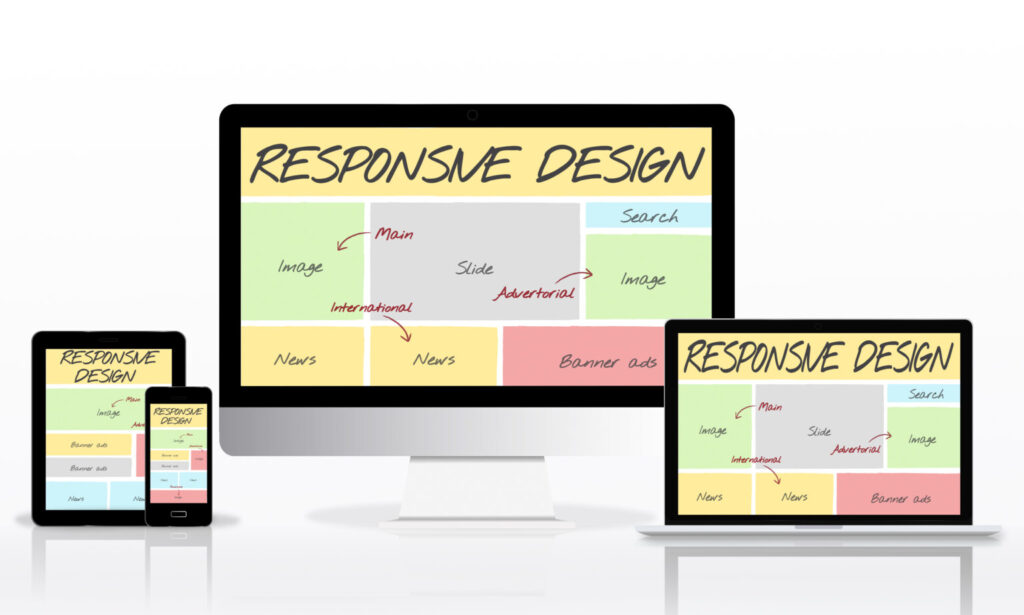The modern visitor is impatient, digitally fluent, and overwhelmed with choices. They arrive on your homepage with a single question: “Is this worth my time?” You have less than seven seconds the critical attention window to deliver a definitive “Yes.” Fail to answer that question clearly and immediately, and they hit the back button. This is the notorious 7 Second Rule.
In 2025, a pretty website isn’t enough, it must be a silent salesperson. To turn casual traffic into qualified leads, your website design needs to evolve from a digital brochure into a hyper efficient conversion machine. Here are the five non-negotiable conversion fundamentals your homepage must master in 2025.
Fundamental 1: The Zero-Friction Value Proposition (Above the Fold)
Your single most important conversion element is your value proposition. In 2025, it must be visible before any scrolling, instantly answering three questions: What do you do? Who is it for? And why should I care?
The 7-Second Masterclass:
Clarity over Creativity: Your headline should be plain, descriptive, and benefit driven. Avoid clever jargon or ambiguous taglines.
- Example (Bad): Elevating Digital Synergy for Future-Ready Brands.
- Example (Good): We Build High-Converting E-commerce Websites That Grow Your Sales 30% in 90 Days.
The Hero Hierarchy: The main headline, a supporting sub-headline (explaining the how), and the primary Call-to-Action (CTA) must form a cohesive triangle that is instantly readable. This foundational aspect of modern Website Design determines whether a visitor engages or departs.
Fundamental 2: The Core Web Vitals Commandment (Speed is Trust)
In the 7 second window, slow loading assets burn precious time and destroy trust. Google’s Core Web Vitals (CWV) are now central to ranking and user experience. In 2025, visitors perceive slow speed as a lack of professionalism or security, effectively killing conversion rates before the visitor even sees your product. A sluggish experience instantly signals a business that isn’t serious about its digital presence.
To satisfy the 7 Second Rule, your website design must treat CWV as conversion metrics, not just technical ones. First, focus on Largest Contentful Paint (LCP), which measures how quickly the main content typically the hero image and headline loads. If your LCP exceeds 2.5 seconds, you’re already losing a significant percentage of potential customers. Next, address First Input Delay (FID), which is evolving into Interaction to Next Paint (INP). This measures how responsive your page is to user input, such as a button click. Any noticeable lag in interactivity is a friction point that can lead to immediate abandonment.
Finally, eliminate Cumulative Layout Shift (CLS) the annoying visual jiggling of elements that occurs during loading. A stable, fast loading website design signals efficiency and reliability, making it a critical conversion strategy in 2025.
Fundamental 3: Hyper-Focused, Singular Call-to-Action (CTA)
When a visitor has less than 7 seconds, offering them five different paths paralyzes their decision-making process (known as Hick’s Law). Your homepage must feature one primary, magnetic CTA (e.g., Book a Free Audit, Start Your 14-Day Trial, Get the 2025 Report).
CTA Mastery:
- Placement: Place the primary CTA Above the Fold (as part of Fundamental 1) and use a distinct, contrasting color that pops off the page.
- Actionable Language: Use verbs that convey immediate value. Avoid vague terms like “Submit” or “Click Here.”
- The Secondary CTA: If absolutely necessary, offer one lighter, low-commitment secondary CTA (e.g., “See Case Studies”) placed slightly less prominently. This ensures every element of your website design drives a clear next step.
Fundamental 4: Immediate, Scannable Social Proof
Trust is built fastest through validation from others. Since you don’t have time for a full case study, social proof must be integrated into the immediate viewing area.
A modern website design uses social proof as an immediate credibility badge, not as a decorative feature:
- Logo Bar: Display logos of your most recognizable clients or “As Featured In” publications prominently, often right below the hero section.
- Micro-Testimonials: Use a single, powerful line from a high-profile client or a quantifiable statistic. (e.g., “Increased our lead conversion 45%.” – J. Smith, CEO).
- Trust Signals: Badges indicating security (SSL), money-back guarantees, or industry certifications should be subtly integrated near your CTA button.
Fundamental 5: The Mobile-First, Thumb-Friendly Hierarchy
With global mobile traffic surging, if your website doesn’t load flawlessly and function easily on a small screen, you are actively hemorrhaging conversions.
In 2025, “mobile-friendly” means Mobile-First. Every element of your website design from typography to navigation must be prioritized for the user holding a phone.
Mobile Non-Negotiables:
- Simplified Navigation: Use a sticky footer navigation or a clear hamburger menu, limiting main menu items to 5 or fewer.
- Thumb Zone Optimization: Ensure your primary CTA button is large and placed within easy reach of a user’s thumb (the bottom-center of the screen).
- Readability: Use large, readable fonts and generous white space. Long blocks of text are instant killers on mobile.

Final Thought
Mastering the 7 Second Rule is not about adding features; it’s about ruthlessly prioritizing. Every pixel, word, and technical choice in your website design must serve one purpose: quickly validating the visitor’s decision to stay and guiding them to the next action. Implement these five fundamentals, and watch your homepage convert like never before.
Must Read: Bringing Websites to Life: The Role of Animations in Website Design


